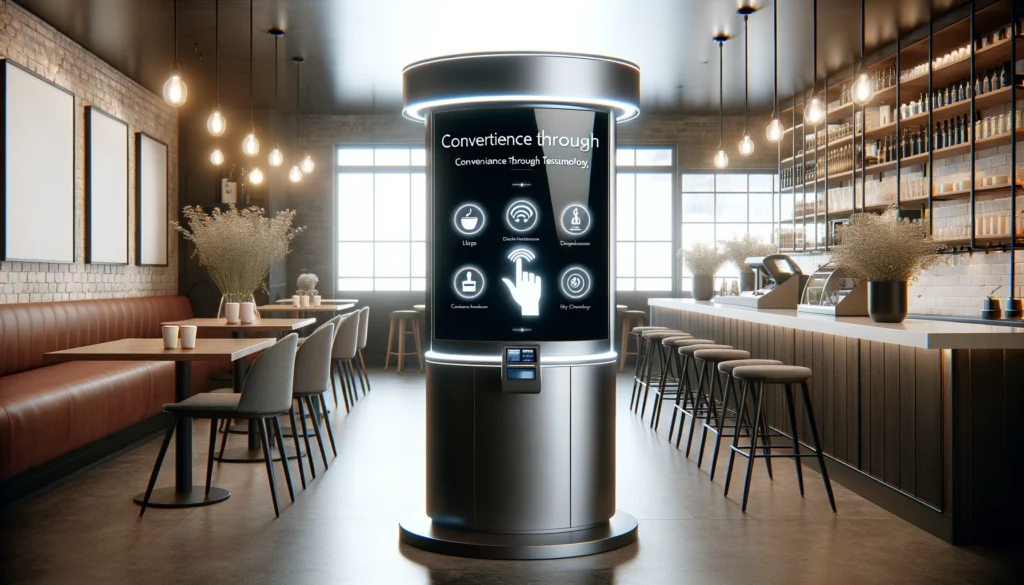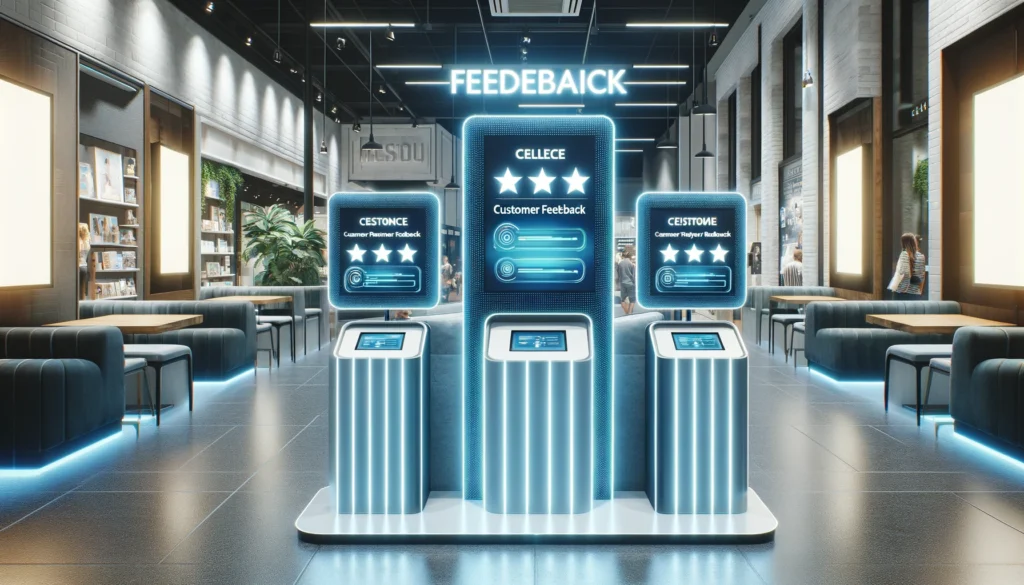Discover How Implementing ORM Software Can Elevate Satisfaction Scores by 20%
Every brand’s business goal is to achieve high levels of client happiness, which are critical to its success. If you’re reading this post, you likely agree with this statement and seek advice on increasing customer happiness.
Customer happiness affects your company’s revenue. Low customer satisfaction levels are likely to result in low retention rates. According to the book Marketing Metrics, organizations have a 60-70% chance of selling to an existing customer, whereas the possibility of selling to a new consumer is only 5-20%.
Given this, can you afford to provide a terrible client experience? Well, I’ve got five tried-and-true methods for spreading the satisfaction magic throughout your firm. Indeed, using a strong online reputation management tool will help make things easier.

What Is Customer Satisfaction?
Customer satisfaction is a statistic that assesses how well a product or service meets the needs of its customers. It is critical for the success of a small business, especially when an entrepreneur wants to expand their client base by participating in extensive market research surveys and doing face-to-face interviews with customers as they buy.
So your consumers feel appreciated and can suggest what you should or shouldn’t work on next. High-quality customer service is essential if you want to attract new clients. If dissatisfied, they will tell their friends how unsatisfactory your items or services were and will most likely recommend alternatives. As a small business owner, you must prioritize customer happiness! Customer happiness can make or break a business. It is more important now than ever.

Why Is Customer Satisfaction Important?
1. A Devoted Client Is A Valuable Asset That Would Sustain Your Company.
According to Harvard Business School studies, even a 5% improvement in client retention can boost firm revenues by more than 25%. As a result, even if you have a few devoted customers, they can easily cover your whole acquisition cost and then some. Consider how many financial services companies, such as banks or mobile networks, are happy to invest in their existing customer base.
They understand how expensive it may be to use their ongoing loyalty programs, but the rewards are even greater than they could have imagined!
2. Losing A Customer Can Greatly Harm Your Business.
This is not new; all it takes for customers to transfer their loyalties from one brand to another is one negative encounter, whether they suffer significant delays in resolving an issue, being moved back and forth between departments, or just having a situation go unaddressed.
While large organizations may recover quickly because this occurs daily, most small businesses do not have the same tolerance for creating a reputation and client base. Like any other, these firms must uphold the customer service promise and provide prompt and efficient service on social media in the same way they would through more traditional channels – because anything else may be disastrous.
3 – Great Customer Experience Leads to Great Brands.
It is critical that your clients are happy, but even more crucial that they are fulfilled. Suppose you make your customers feel their requirements have already been addressed. In that case, they are more likely to continue with you and share content about your product or service on social media reviews rather than arbitrarily recommending your organization.
When the consumer experience is outstanding, they are more inclined to interact with your material, offering constructive and commendable feedback.

The 5 Ways To Improve Customer Satisfaction
1. Create Customer Profiles
Customer profiles are useful for more than simply marketing and sales. They are an excellent approach to putting yourself in your client’s shoes, allowing you to make decisions that benefit them the greatest. 68% of customers will spend more money with a company that understands and respects them as individuals.
Collect information about your target audience and their demographics to create customer profiles. Please consider their purchase habits, pain areas, and any other important features of your ideal customer. Then, when making decisions, use these to anticipate how a business change will affect your target audience.
2. Streamline And Simplify Processes
According to Gartner data, 94% of consumers with low-effort experiences plan to repurchase, compared to 4% with high-effort experiences.
One of the primary reasons customers abandon you is due to difficult or cumbersome online and offline processes, which generate dissatisfaction, abandonment, and loss of client loyalty. In today’s competitive landscape, it is critical to simplify processes and ensure ease of use across the client journey.
Now, how are we going to accomplish this?
- Intuitive User Interfaces: Create simple interfaces for websites, apps, and other platforms that are easy to navigate and understand.
- Clear Communication: To avoid confusion, provide clear and concise instructions and explanations at each point of the client journey.
- Easy Onboarding: Streamline the onboarding process and reduce customer effort by eliminating needless processes, allowing quick and easy sign-ups, permitting guest log-in, and providing assistance with the onboarding process through interactive components.
- Implement Automation: Wherever practical, automate repetitive operations and reduce manual effort for customers and employees.
- Mobile Optimization: Improve platforms and procedures for mobile devices to support the growing number of clients who interact through smartphones and tablets.
- Self-Service Options: Provide self-help options such as FAQs, knowledge bases, and chatbots to allow customers to find answers and solutions independently.
- Seamless Integration: Ensure that diverse channels and touchpoints work together seamlessly to give a consistent experience throughout all encounters.
- Input Mechanisms: Regularly collect client input to discover pain points, places for improvement, and chances to reduce processes even further.
3. Respond To Customer Reviews
According to a BrightLocal survey, 89% of customers said they are “likely” or “highly likely” to hire a company that answers to all online reviews. Furthermore, 22% of customers said they would “not at all likely” utilize a company that does not reply to feedback.
Responding to customer reviews, particularly unfavorable ones, is critical to preserving a positive online reputation and building confidence with current and prospective consumers.
Here’s how you efficiently respond to customers’ reviews:
- Be prompt: Respond swiftly to reviews, particularly negative ones. Aim to respond within 24-48 hours to indicate that you value client input and are committed to fixing their issues.
- Employ Personalization: Make your comments more individualized by pointing to certain facts the reviewer addressed and addressing them by name in their review.
- Express appreciation: Begin your response by thanking the customer for taking the time to provide positive or negative feedback.
- Acknowledge Concerns: Address any particular concerns or difficulties expressed by the customer in their review. Let them know you understand their point of view and empathize with their situation.
- Apologize and Accept Responsibility: Express sincere apologies for any inconvenience or displeasure caused by the consumer. Accept responsibility for any errors or failures on your side.
- Propose Solutions: Provide practical solutions to the customer’s issues and fix the situation satisfactorily.
4. Train Your Employees
Training your employees seems like a no-brainer. It is critical, but it is something that many firms ignore. If you want your staff to provide the best client experience, you must equip them with the necessary tools, systems, and processes.
You must assist them in understanding your client’s needs and concerns. You must encourage them to collect online reviews and offer them resources and tools to act on it.
To successfully train your personnel, you should:
- Make sure they understand your consumers’ pain points and issues. Consider allowing them to listen in on sales and customer support calls to understand your clients’ difficulties better.
- Make sure they understand your products and services.
- Create a mentoring strategy and divide training into tiers.
- Set training goals and reward your personnel for meeting them.

5. Employee an ORM Software
Online Reputation Management (ORM) software enhances customer satisfaction by allowing businesses to monitor and respond to their online feedback meticulously. Studies show that businesses employing ORM tools significantly improve customer satisfaction. For instance, a survey found that companies using ORM software reported a 20% increase in customer satisfaction scores.
This is primarily because ORM enables businesses to quickly address negative feedback, making customers feel heard and valued while amplifying positive reviews, which can influence potential customers.
Within this context, CheckThereviews emerges as a standout ORM tool. It provides businesses a comprehensive platform to track, manage, and interact with their online reviews across multiple channels. By utilizing CheckThereviews, companies can ensure that they are not only maintaining their online reputation but are also actively enhancing customer satisfaction.
The software’s intuitive interface and robust analytics help businesses understand customer sentiments in-depth, enabling them to make informed decisions that contribute to a more positive customer experience.
Conclusion
Improving client happiness requires more than just offering a product or service; it also entails generating extraordinary experiences that create a lasting impression. Understanding your customers’ expectations, improving their knowledge, providing outstanding service, and going the extra mile will help you build trust, loyalty, and advocacy with your consumers.







